Search Result
Results for "
mycobacterial
" in MedChemExpress (MCE) Product Catalog:
4
Isotope-Labeled Compounds
| Cat. No. |
Product Name |
Target |
Research Areas |
Chemical Structure |
-
- HY-47597
-
|
|
Bacterial
|
Infection
|
|
Protein kinase G inhibitor-2 (Compound 266) is a mycobacterial protein kinase G inhibitor, with an IC50 of 3 μM. Protein kinase G inhibitor-2 can be used for mycobacterial infection research .
|
-
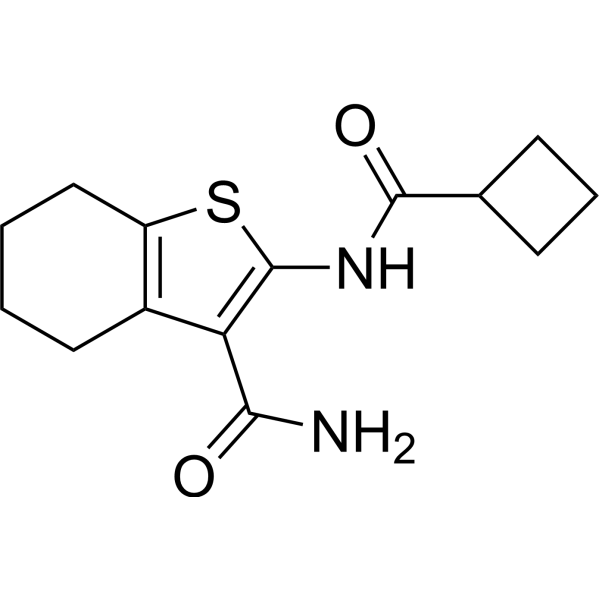
-
- HY-48958
-
|
|
Bacterial
|
Infection
|
|
Protein kinase G inhibitor-1 (Compound 270) is a mycobacterial protein kinase G inhibitor, with an IC50 of 0.9 μM. Protein kinase G inhibitor-1 can be used for mycobacterial infection research .
|
-
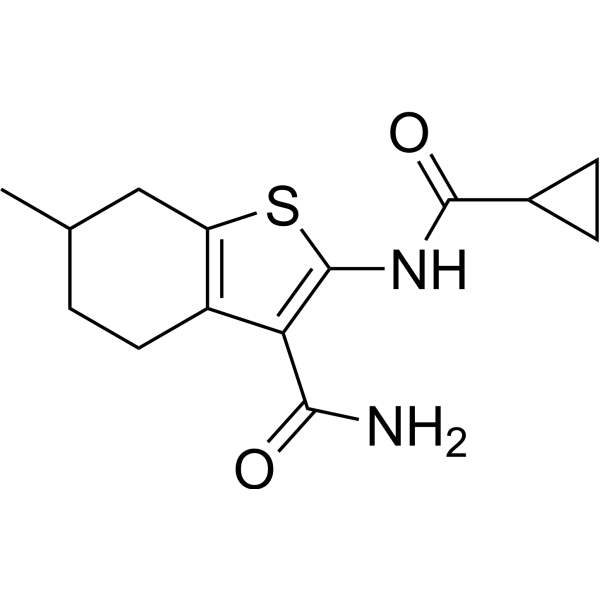
-
- HY-152035
-
|
|
Bacterial
|
Infection
Inflammation/Immunology
|
|
Mycobacterial Zmp1-IN-1 is a mycobacterial zinc metalloprotease-1 (Zmp1) inhibitor. Mycobacterial Zmp1-IN-1 has anti-mycobacterial activity for Mtb H37Ra in dose-dependent inhibition. Mycobacterial Zmp1-IN-1 can be used for the research of tuberculosis (TB) .
|
-
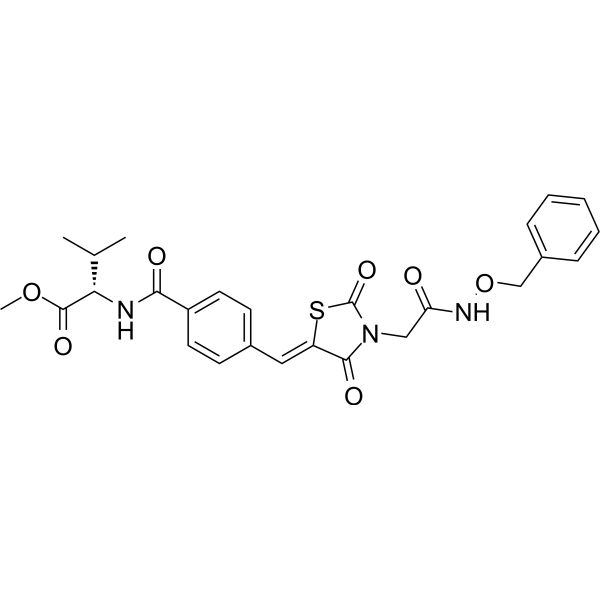
-
- HY-P3270
-
|
|
Bacterial
Antibiotic
|
Infection
|
|
Capreomycin is a macrocyclic peptide antibiotic. Capreomycin can be used for anti-multidrug-resistant-tuberculosis research. Capreomycin can inhibit phenylalanine synthesis in in mycobacterial ribosomes translation
|
-

-
- HY-142031
-
|
|
Bacterial
|
Infection
|
|
4-Piperidinecarboxamide is a mycobacterial aspartyl-tRNA synthetase (AspS) inhibitor. 4-Piperidinecarboxamide is a promising anti-tuberculosis (TB) agent .
|
-

-
- HY-120884
-
|
|
Bacterial
|
Infection
|
|
InhA-IN-5 (compound 1) is a potent Mycobacterial tuberculosis (Mtb) trans-2-enoyl-acyl carrier protein reductase (InhA) inhibitor .
|
-

-
- HY-B1046
-
-

-
- HY-117145
-
|
|
Bacterial
|
Infection
|
|
Thiophene-2 (TP2) is a specific polyketide synthase 13 (Pks13) inhibitor. Thiophene-2 inhibits mycolic acid biosynthesis and rapidly leads to mycobacterial cell death. Thiophene-2 is active against Mycobacterium tuberculosis with a MIC value of 1 μM, and has potent anti-tuberculosis activity .
|
-
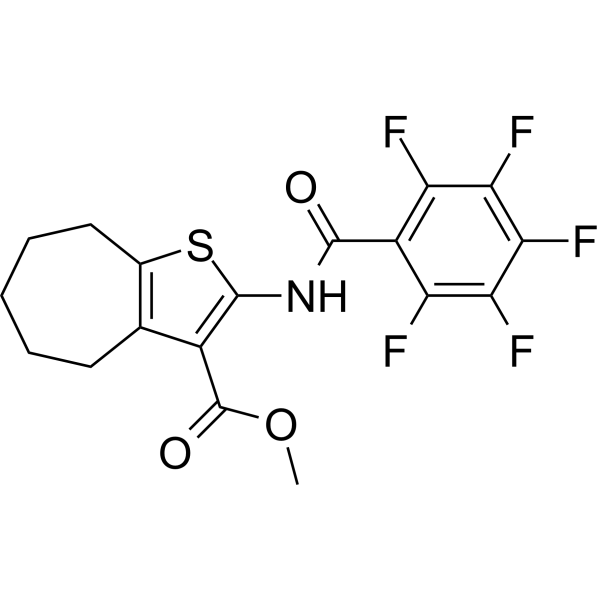
-
- HY-10846
-
|
OPC-67683
|
Bacterial
Antibiotic
|
Cancer
|
|
Delamanid, a newer mycobacterial cell wall synthesis inhibitor, inhibits the synthesisi of mucolic acids .
|
-
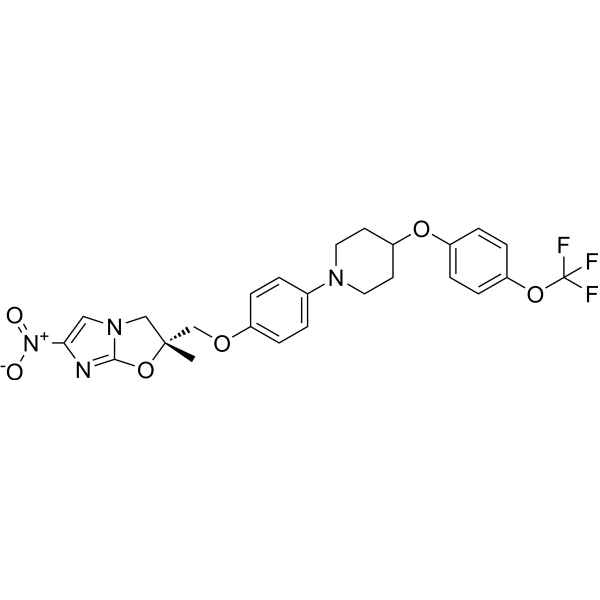
-
- HY-N8131
-
|
|
Bacterial
|
Infection
Cancer
|
|
Pangelin is a coumarin that can be found in Ducrosia anethifolia. Pangelin exhibits anti-mycobacterial and anti-tumor activities .
|
-
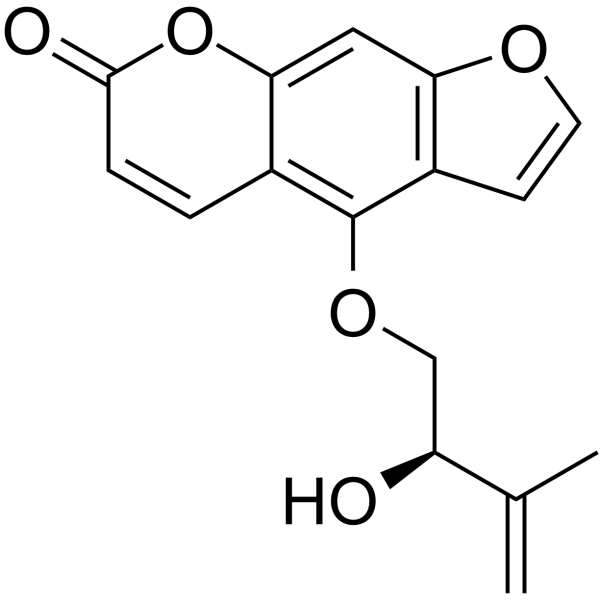
-
- HY-15993
-
|
AZD2563; AZD5847
|
Antibiotic
|
Infection
|
|
Posizolid (AZD2563), an oxazolidinone antibiotic, is developed by AstraZeneca for the study of bacterial infections. Posizolid shows very good anti-mycobacterial activity .
|
-
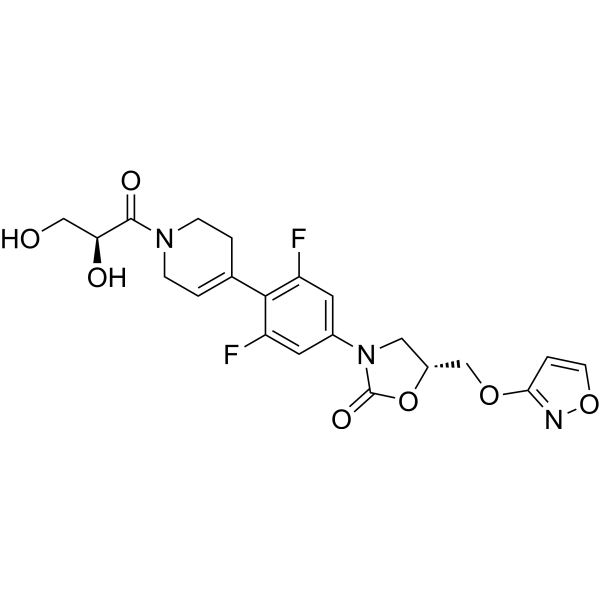
-
- HY-P2064
-
|
|
Bacterial
|
Infection
|
|
Lariatins is a novel anti-mycobacterial peptides with a lasso structure produced by Rhodococcus jostii K01-B0171 .
|
-
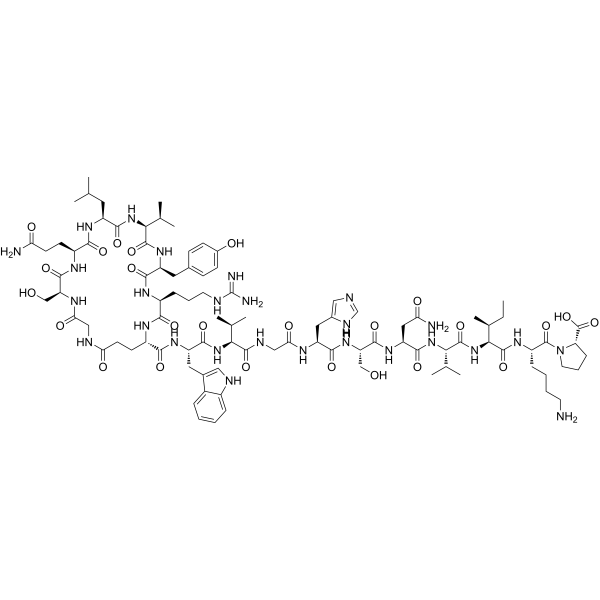
-
- HY-10846S
-
|
OPC-67683-d4
|
Bacterial
|
Infection
|
|
Delamanid-d4 is the deuterium labeled Delamanid. Delamanid, a newer mycobacterial cell wall synthesis inhibitor, inhibits the synthesisi of mucolic acids[1].
|
-

-
- HY-123635
-
|
|
Antibiotic
Bacterial
|
Infection
|
|
Nybomycin, an antibiotic, exhibits antiphage and antibacterial properties. Nybomycin binds to DNA and induces a unique morphological change to mycobacterial bacilli leading the bacterial cell death .
|
-

-
- HY-151356
-
|
|
Bacterial
|
Infection
|
|
Antibacterial agent 122 (compound 15) is a thiourea derivative with anti-mycobacterial activity and low cytotoxicity. Antibacterial agent 122 can be used for tuberculosis-related studies .
|
-
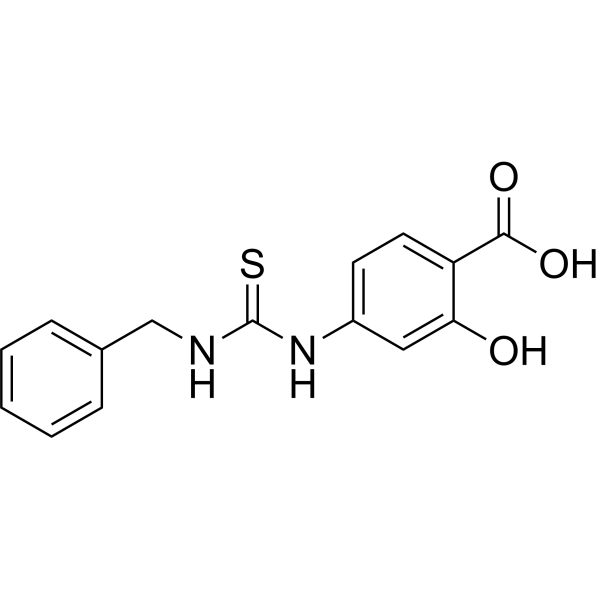
-
- HY-109588
-
|
|
Bacterial
|
Infection
|
|
NITD-349 is an MmpL3 inhibitor that shows highly potent anti-mycobacterial activity with MIC50 of 23 nM against virulent Mycobacterium tuberculosis H37Rv.
|
-

-
- HY-151354
-
|
|
Bacterial
|
Infection
|
|
Antibacterial agent 121 (Compound 10) is an antibacterial agent. Antibacterial agent 121 shows anti-mycobacterial and anti-inflammatory activities and can be used in Tuberculosis (TB) research .
|
-
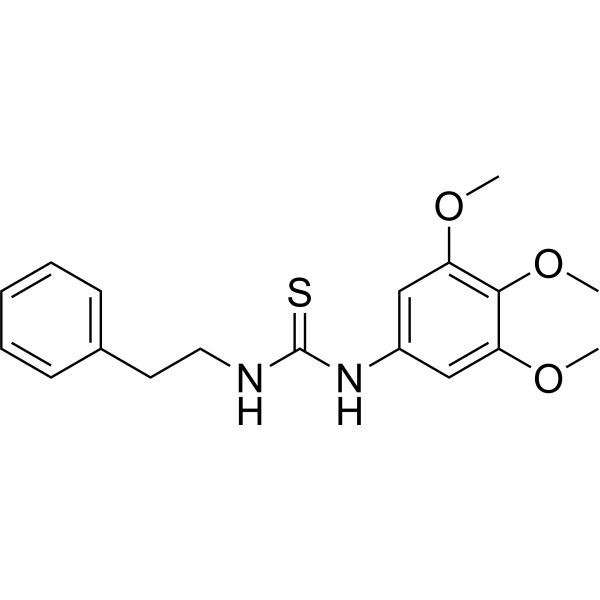
-
- HY-109587
-
|
|
Bacterial
|
Infection
|
|
BM635 is a MmpL3 inhibitor with outstanding anti-mycobacterial activity. BM635 has an MIC50 of 0.12 μM against M. tuberculosis H37Rv.
|
-
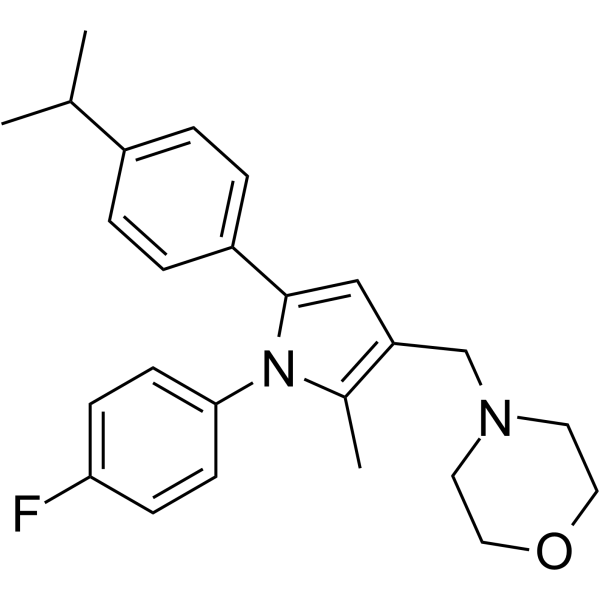
-
- HY-14137
-
|
SR 141716A Hydrochloride
|
Cannabinoid Receptor
Bacterial
|
Infection
Metabolic Disease
Cancer
|
|
Rimonabant Hydrochloride (SR 141716A Hydrochloride) is a highly potent and selective central cannabinoid receptor (CB1) antagonist with an Ki of 1.8 nM. Rimonabant Hydrochloride (SR 141716A Hydrochloride) also inhibits Mycobacterial membrane protein Large 3 (MMPL3).
|
-
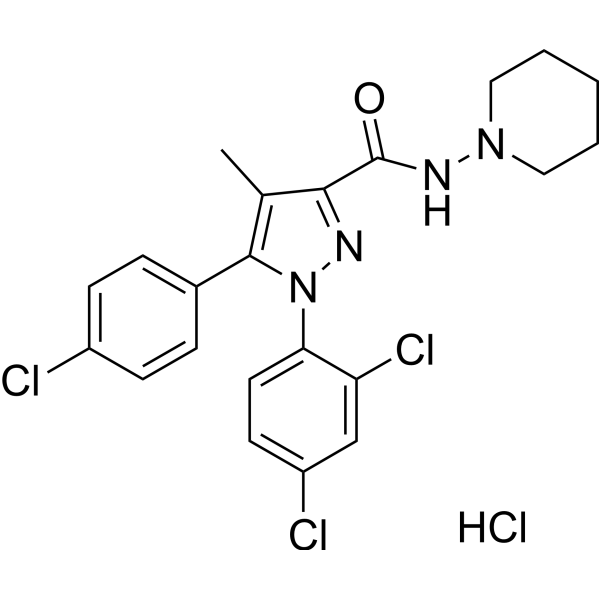
-
- HY-N3845
-
|
|
Bacterial
|
Inflammation/Immunology
Cancer
|
|
Ergosterol peroxide is a steroid derivative and can be isolated from a variety of fungi, yeast, lichens or sponges. Ergosterol peroxide has anti-tumour, proapoptotic, anti-inflammatory, anti-mycobacterial, and anti-proliferative activities .
|
-
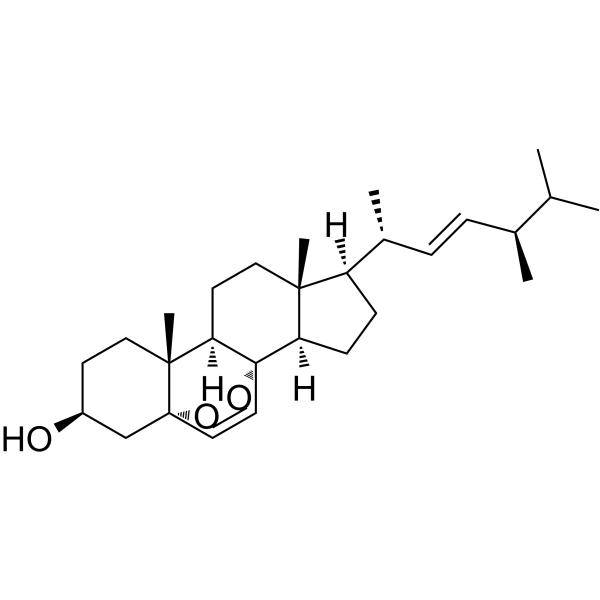
-
- HY-14136
-
-
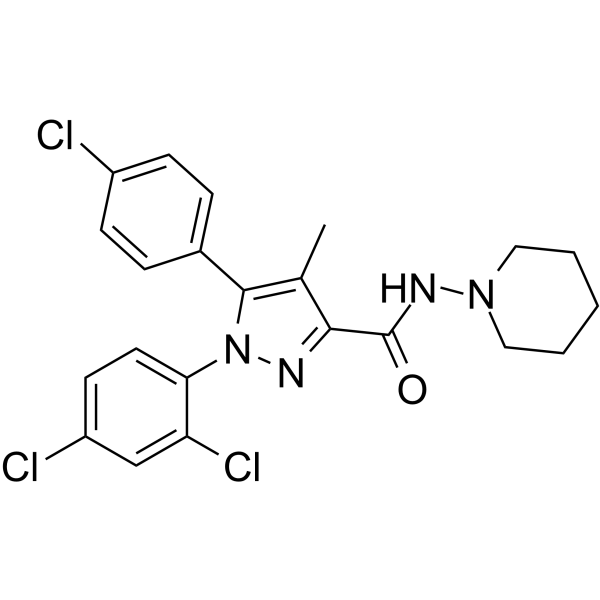
-
- HY-151205
-
|
|
Bacterial
|
Infection
Inflammation/Immunology
|
|
Antituberculosis agent-3 (Compound 2) is an antituberculosis agent. Antituberculosis agent-3 shows anti-mycobacterial activity, and can inhibit M. tuberculosis H37Rv strain growth (MIC=12.5 μg/mL) .
|
-
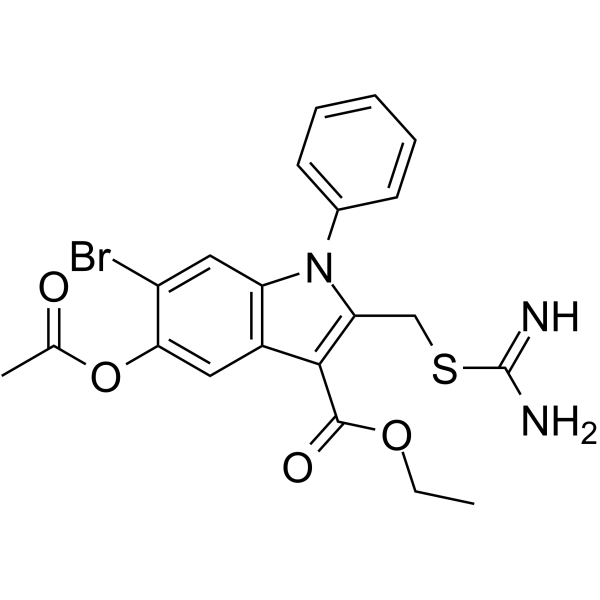
-
- HY-153575
-
|
|
PROTACs
Bacterial
|
Infection
|
|
BacPROTAC-1 is a mSA BacPROTAC degrader. BacPROTAC-1 binds mSA and ClpCNTD with high affinity (KDs of 3.9 and 2.8 μM, respectively) .
|
-
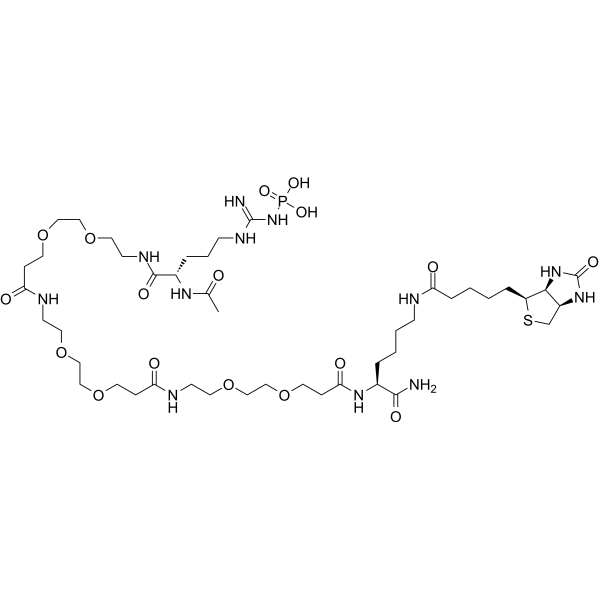
-
- HY-149998
-
|
|
Bacterial
Reactive Oxygen Species
Apoptosis
|
Infection
|
|
Antimycobacterial agent-5 (compound 27) is an imidazopyridine amide targeting mycobacterial electron transport chain (ETC) airway CIII2CIV2 supercomplexes. The IC50 value of Antimycobacterial agent-5 against Mycobacterium smegmatisCIII2CIV2 is 441 nM .
|
-

-
- HY-14136S
-
-

-
- HY-109587B
-
|
|
Bacterial
|
Infection
|
|
BM635 mesylate is a MmpL3 inhibitor with outstanding anti-mycobacterial activity. BM635 mesylate has a MIC50 of 0.6 μM against M. tuberculosis H37Rv. BM635 mesylate significantly improves the bioavailability compared to free-base BM635 .
|
-
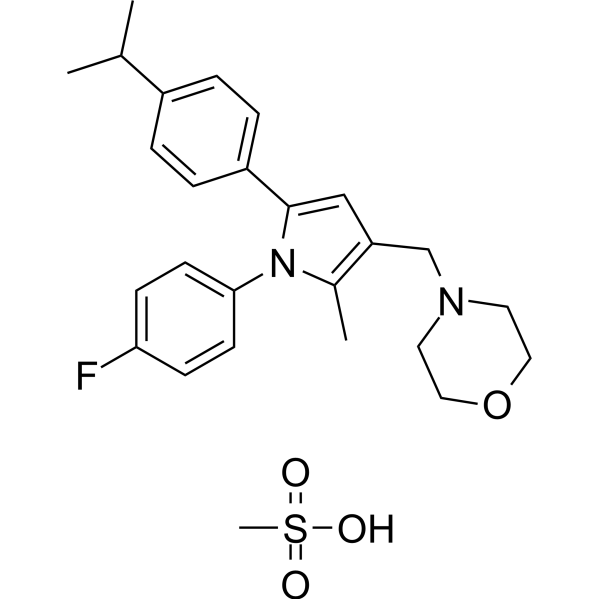
-
- HY-14137S
-
|
|
Isotope-Labeled Compounds
Cannabinoid Receptor
Bacterial
|
Infection
Metabolic Disease
Cancer
|
|
Rimonabant-d10 (hydrochloride) is the deuterium labeled Rimonabant hydrochloride. Rimonabant hydrochloride (SR 141716A hydrochloride) is a highly potent and selective central cannabinoid receptor (CB1) antagonist with an Ki of 1.8 nM. Rimonabant hHydrochloride (SR 141716A Hydrochloride) also inhibits Mycobacterial membrane protein Large 3 (MMPL3)[1][2].
|
-
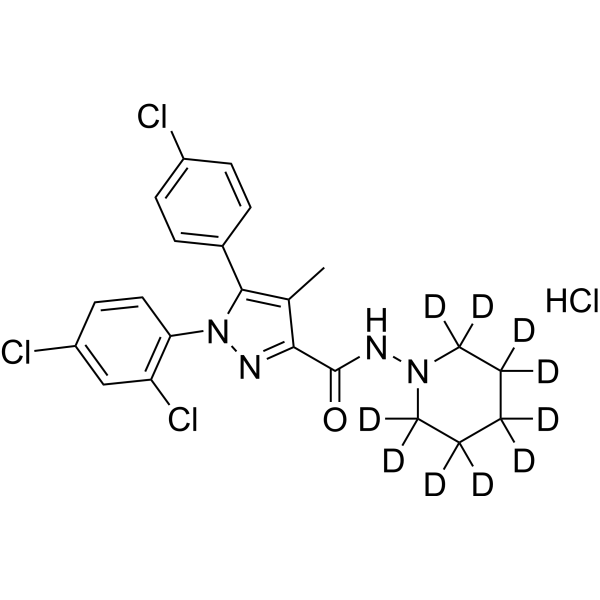
-
- HY-109587A
-
|
|
Bacterial
|
Infection
|
|
BM635 hydrochloride is a MmpL3 inhibitor with outstanding anti-mycobacterial activity. BM635 hydrochloride has an MIC50 of 0.08 μM against M.tuberculosis H37Rv. BM635 hydrochloride doubles the in vivo exposure with respect to the free base BM635 .
|
-
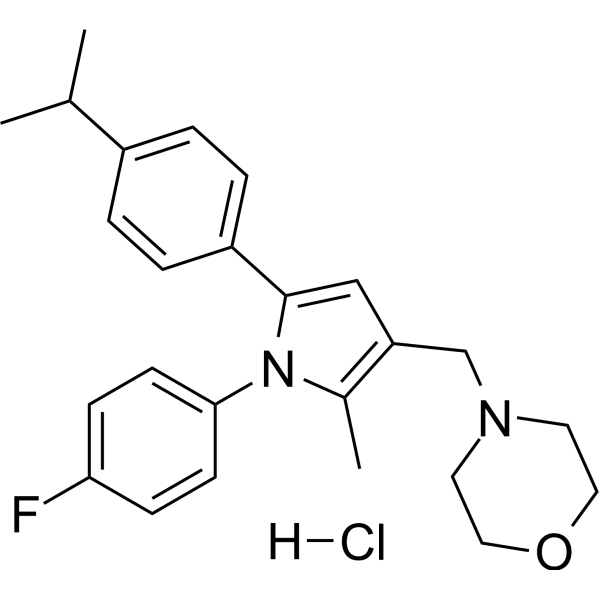
-
- HY-151204
-
|
|
Bacterial
|
Infection
Inflammation/Immunology
|
|
PknB-IN-1 (Compound 2) is a protein kinase B (PknB) inhibitor (IC50=14.4 μM). PknB-IN-1 shows anti-mycobacterial activity, can inhibit M. tuberculosis H37Rv strain growth (MIC=6.2 μg/mL) .
|
-
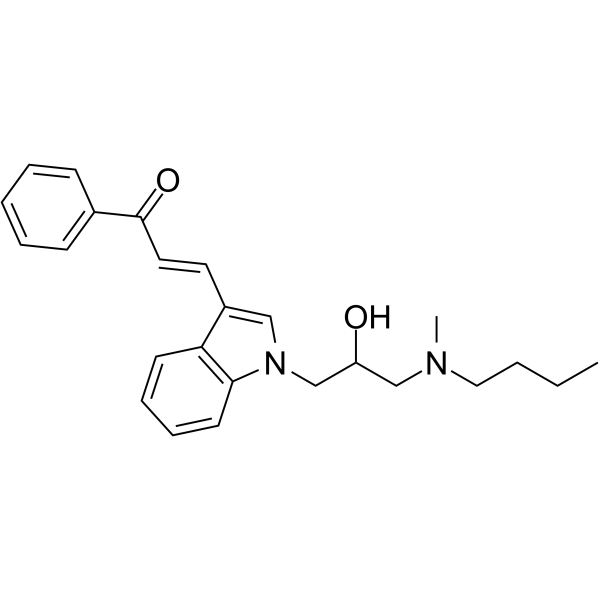
-
- HY-N2443
-
|
|
Bacterial
|
Infection
Neurological Disease
|
|
Tribuloside is a flavonoid that can be isolated from Tribulus terrestris L . Tribuloside exhibits anti-mycobacterial activity against the non-pathogenic Mycobacterium species with a minimum inhibitory concentration (MIC) of 5.0 mg/mL. Tribuloside has 1,1-diphenyl-2-picrylhydrazyl radical scavenging activity .
|
-

-
- HY-150967
-
|
|
Bacterial
|
Infection
|
|
MmpL3-IN-1 (compound 32) is a potent Mycobacterial membrane protein large 3 (MmpL3) inhibitor. MmpL3-IN-1 has anti-tuberculosis activity with the MIC<0.016 μg/mL in M. tuberculosis and can be used in studies of drug-resistant tuberculosis .
|
-

-
- HY-100750
-
-
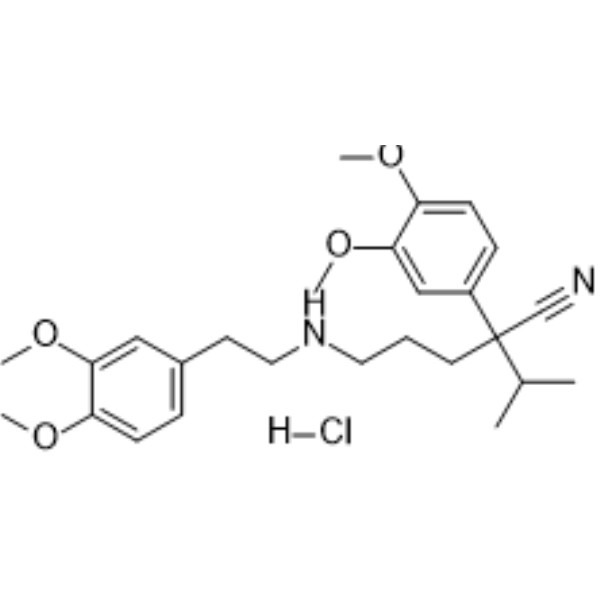
-
- HY-135328
-
-
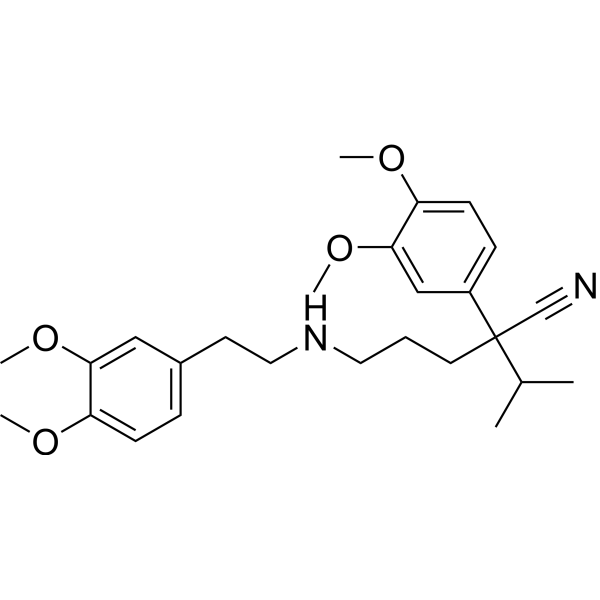
-
- HY-N6624
-
|
|
Bacterial
|
Inflammation/Immunology
|
|
Skullcapflavone II, a flavonoid derived from Scutellaria baicalensis, has anti-inflammatory, anti-microbial activities. Skullcapflavone II regulates osteoclast differentiation, survival, and function. Skullcapflavone II exerts potent antimicrobial activity against M. aurum and M. bovis BCG .
|
-
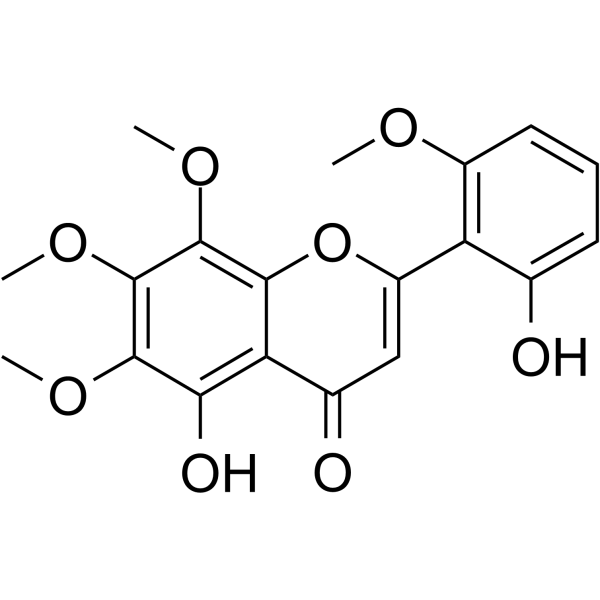
-
- HY-100725
-
BM212
3 Publications Verification
|
Bacterial
|
Infection
|
|
BM212 is a potent Mycobacterial membrane protein Large 3 (MmpL3) inhibitor. BM212 has strong bactericidal activity against both M. tuberculosis and some nontuberculosis mycobacteria. BM212 exhibits antimycobacterial activity against M. tuberculosis H37Rv with an MIC of 5 µM .
|
-

-
- HY-N7030
-
|
|
Fungal
Parasite
Bacterial
|
Infection
|
|
5,7,3',4'-Tetramethoxyflavone, an orally active polymethoxyflavones (PMFs) that can be isolated from M. exotica, possesses various bioactivities, including anti-fungal, anti-malarial, anti-mycobacterial, and anti-inflammatory activities. 5,7,3',4'-Tetramethoxyflavone exhibits chondroprotective activity by targeting β-catenin signaling .
|
-
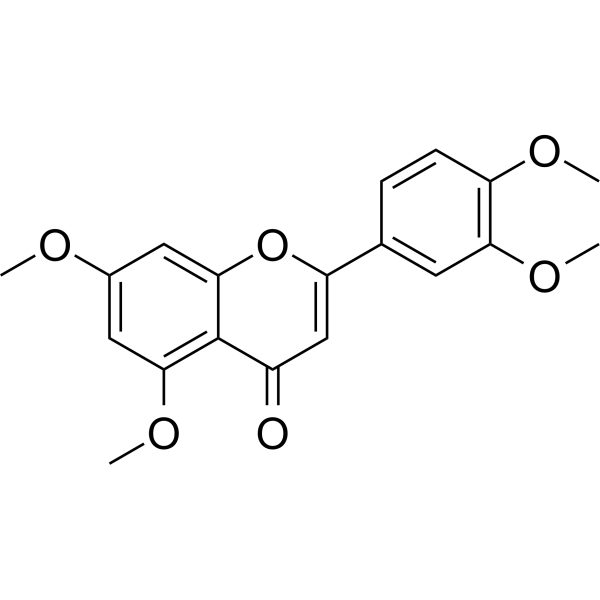
-
- HY-120733
-
|
FKI-4905
|
Bacterial
Endogenous Metabolite
|
Infection
Inflammation/Immunology
|
|
Calpinactam (FKI-4905), a fungal metabolite, is a new anti-mycobacterial agent.Calpinactam is active only against Mycobacteria among various microorganisms, including Gram-positive and Gram-negative bacteria, fungi and yeasts. Calpinactam inhibits the growth of Mycobacterium smegmatis and Mycobacterium tuberculosis with MIC values of 0.78 and 12.5 μg/ml, respectively .
|
-
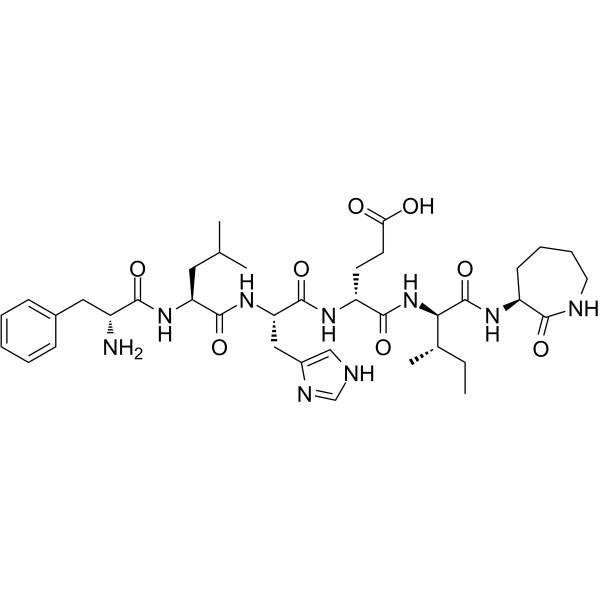
-
- HY-147704
-
|
|
Bacterial
|
Infection
|
|
Antimycobacterial agent-2 (compound 58) is a potent antimycobacterial agent. Antimycobacterial agent-2 shows anti-mycobacterial activities with an MIC99 of 0.8 µM for Mycobacterium tuberculosis (M.tb) H37Rv. Antimycobacterial agent-2 shows cytotoxic activities with an IC50 of48.1 µM for CHO cells .
|
-
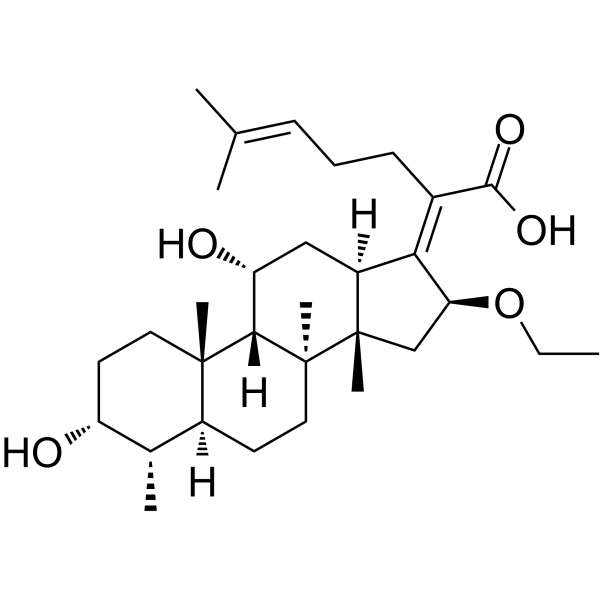
-
- HY-122643
-
|
|
Bacterial
|
Infection
|
|
NITD-916, a 4-hydroxy-2-pyridone derivative, is an orally active and highly lipophilic mycobacterial enoyl reductase InhA inhibitor with an IC50 of 570 nM. NITD-916 forms a ternary complex with InhA and NADH to block access to the fatty acyl substrate binding pocket. NITD-916 has potent anti-tuberculosis effects .
|
-

-
- HY-N6687
-
|
A-23187; Antibiotic A-23187
|
Oxidative Phosphorylation
Bacterial
Fungal
Apoptosis
Autophagy
Antibiotic
|
Infection
Cancer
|
|
Calcimycin (A-23187) is an antibiotic and a unique divalent cation ionophore (like calcium and magnesium). Calcimycin induces Ca 2+-dependent cell death by increasing intracellular calcium concentration. Calcimycin inhibits the growth of Gram-positive bacteria and some fungi. Calcimycin also inhibits the activity of ATPase and uncouples oxidative phosphorylation (OXPHOS) of mammalian cells. Calcimycin induces apoptosis .
|
-
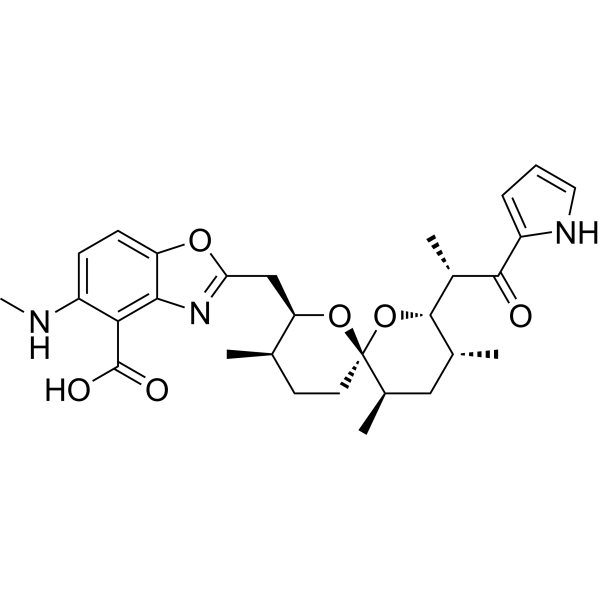
-
- HY-135328S
-
-

-
- HY-N6687A
-
|
A-23187 hemicalcium salt; Antibiotic A-23187 hemicalcium salt
|
Oxidative Phosphorylation
Bacterial
Fungal
Apoptosis
Autophagy
Antibiotic
|
Infection
Cancer
|
|
Calcimycin hemicalcium salt (A-23187 hemicalcium salt) is an antibiotic and a unique divalent cation ionophore (like calcium and magnesium). Calcimycin hemicalcium salt induces Ca 2+-dependent cell death by increasing intracellular calcium concentration. Calcimycin hemicalcium salt inhibits the growth of Gram-positive bacteria and some fungi. Calcimycin hemicalcium salt also inhibits the activity of ATPase and uncouples oxidative phosphorylation (OXPHOS) of mammalian cells. Calcimycin hemicalcium salt induces apoptosis .
|
-
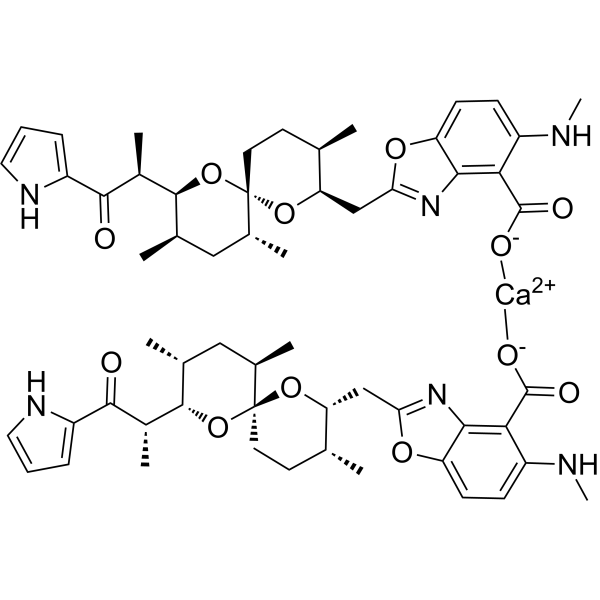
-
- HY-N6687B
-
|
A-23187 hemimagnesium; Antibiotic A-23187 hemimagnesium
|
Oxidative Phosphorylation
Bacterial
Fungal
Apoptosis
Autophagy
|
Infection
Cancer
|
|
Calcimycin (A-23187) hemimagnesium is an antibiotic and a unique divalent cation ionophore (like calcium and magnesium). Calcimycin hemimagnesium induces Ca 2+-dependent cell death by increasing intracellular calcium concentration. Calcimycin hemimagnesium inhibits the growth of Gram-positive bacteria and some fungi. Calcimycin hemimagnesium also inhibits the activity of ATPase and uncouples oxidative phosphorylation (OXPHOS) of mammalian cells. Calcimycin hemimagnesium induces apoptosis .
|
-

-
- HY-146158
-
|
|
Bacterial
Potassium Channel
Antibiotic
|
Infection
|
|
WX-081, an anti-tuberculosis agent, displays excellent anti-mycobacterial activity against M. tuberculosis H37Rv and low cytotoxicity. WX-081 exhibits potent activity with MIC50s of 0.083 and 0.11 μg/mL for agent susceptible tuberculosis (DS-TB) and multidrug resistant tuberculosis (MDR-TB) strains. WX-081 also inhibits hERG channel with the IC50 of 1.89 μM.
|
-

-
- HY-13207
-
ONX-0914
Maximum Cited Publications
14 Publications Verification
PR-957
|
Proteasome
Bacterial
HIV
|
Infection
Inflammation/Immunology
|
|
ONX-0914 (PR-957) is a selective inhibitor of low-molecular mass polypeptide-7 (LMP7), the chymotrypsin-like subunit of the immunoproteasome. ONX-0914 blocks cytokine production and attenuates progression of experimental arthritis. ONX-0914 is a noncompetitive irreversible inhibitor of the mycobacterial proteasome (Ki=5.2 μM). ONX-0914 reactivates latent HIV-1 through p-TEFb activation mediated by HSF-1 .
|
-
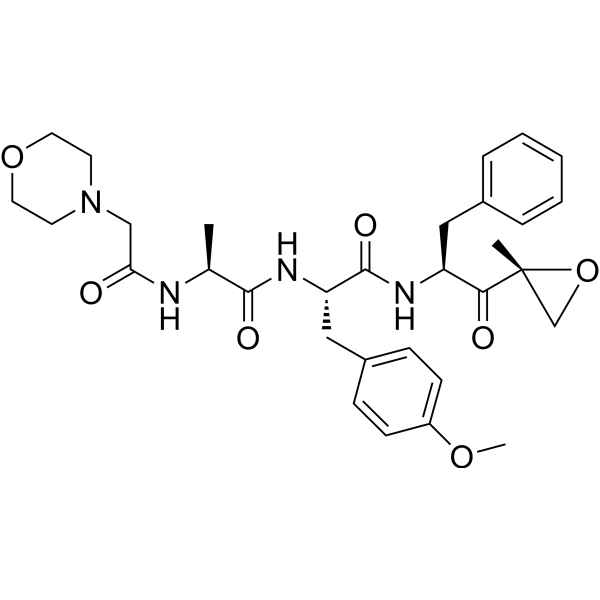
-
- HY-W250306
-
|
|
Biochemical Assay Reagents
|
Others
|
|
Carbol fuchsin is a histological stain used in microbiology to distinguish acid-fast bacteria from non-acid-fast bacteria. It is a mixture of basic fuchsin, phenol, and water and is commonly used in the Ziehl-Neelsen staining technique for the detection of tuberculosis and other mycobacterial infections. Carbol fuchsin stains the cell walls of acid-fast bacteria bright red, while other cells are unstained or slightly stained. This makes it easier to see and identify these microbes under a microscope. Carbol fuchsin is also used in veterinary medicine and phytopathology for similar purposes.
|
-

-
- HY-13207A
-
ONX-0914 TFA
Maximum Cited Publications
14 Publications Verification
PR-957 TFA
|
Proteasome
Bacterial
HIV
|
Infection
Inflammation/Immunology
|
|
ONX-0914 (PR-957) TFA is a selective inhibitor of low-molecular mass polypeptide-7 (LMP7), the chymotrypsin-like subunit of the immunoproteasome. ONX-0914 TFA blocks cytokine production and attenuates progression of experimental arthritis. ONX-0914 TFA is a noncompetitive irreversible inhibitor of the mycobacterial proteasome (Ki=5.2 μM). ONX-0914 TFA reactivates latent HIV-1 through p-TEFb activation mediated by HSF-1 .
|
-
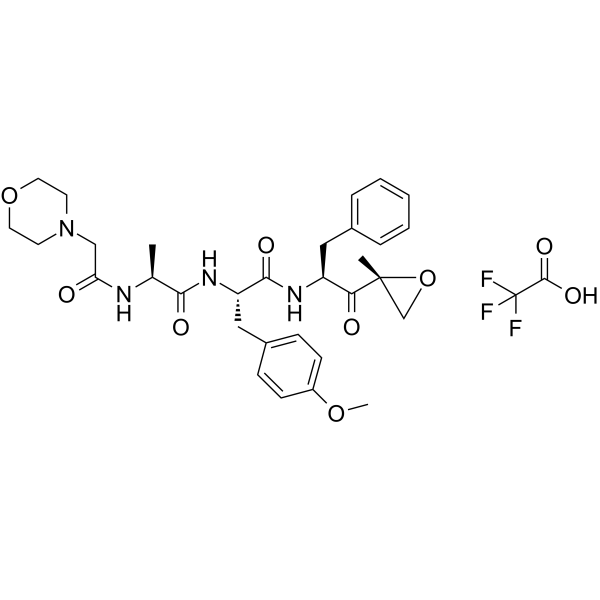
| Cat. No. |
Product Name |
Type |
-
- HY-B1046
-
|
|
Chromogenic Assays
|
|
Clofazimine is an orally-active anti-mycobacterial agent with a wide range of anti-mycobacterial activity including leprosy and tuberculosis. Clofazimine exerts anti-inflammatory activities and anti-tumor activities by interfering DNA replication and inhibiting IL2 (IC50 = 1.10 ± 0.26 μM, Jurkat T) production. Clofazimine can be used in mycobacterial and cancer research .
|
-
- HY-W250306
-
|
|
Dyes
|
|
Carbol fuchsin is a histological stain used in microbiology to distinguish acid-fast bacteria from non-acid-fast bacteria. It is a mixture of basic fuchsin, phenol, and water and is commonly used in the Ziehl-Neelsen staining technique for the detection of tuberculosis and other mycobacterial infections. Carbol fuchsin stains the cell walls of acid-fast bacteria bright red, while other cells are unstained or slightly stained. This makes it easier to see and identify these microbes under a microscope. Carbol fuchsin is also used in veterinary medicine and phytopathology for similar purposes.
|
| Cat. No. |
Product Name |
Target |
Research Area |
-
- HY-P3270
-
|
|
Bacterial
Antibiotic
|
Infection
|
|
Capreomycin is a macrocyclic peptide antibiotic. Capreomycin can be used for anti-multidrug-resistant-tuberculosis research. Capreomycin can inhibit phenylalanine synthesis in in mycobacterial ribosomes translation
|
-
- HY-P2064
-
|
|
Bacterial
|
Infection
|
|
Lariatins is a novel anti-mycobacterial peptides with a lasso structure produced by Rhodococcus jostii K01-B0171 .
|
| Cat. No. |
Product Name |
Category |
Target |
Chemical Structure |
-
- HY-N8131
-
-

-
- HY-N3845
-
-

-
- HY-N2443
-
-

-
- HY-N6624
-
-

-
- HY-123635
-
-

-
- HY-N7030
-
|
|
Infection
Structural Classification
Flavonoids
Classification of Application Fields
Flavones
Source classification
Rutaceae
Plants
Disease Research Fields
Murraya exotica L. Mant.
|
Fungal
Parasite
Bacterial
|
|
5,7,3',4'-Tetramethoxyflavone, an orally active polymethoxyflavones (PMFs) that can be isolated from M. exotica, possesses various bioactivities, including anti-fungal, anti-malarial, anti-mycobacterial, and anti-inflammatory activities. 5,7,3',4'-Tetramethoxyflavone exhibits chondroprotective activity by targeting β-catenin signaling .
|
-

-
- HY-120733
-
-

-
- HY-N6687
-
-

-
- HY-N6687A
-
-

| Cat. No. |
Product Name |
Chemical Structure |
-
- HY-10846S
-
|
|
|
Delamanid-d4 is the deuterium labeled Delamanid. Delamanid, a newer mycobacterial cell wall synthesis inhibitor, inhibits the synthesisi of mucolic acids[1].
|
-

-
- HY-14136S
-
|
|
|
Rimonabant-d10 is deuterium labeled Rimonabant. Rimonabant (SR141716) is a highly potent, brain penetrated and selective central cannabinoid receptor (CB1) antagonist with a Ki of 1.8 nM. Rimonabant (SR141716) also inhibits Mycobacterial membrane protein Large 3 (MMPL3).
|
-

-
- HY-14137S
-
|
|
|
Rimonabant-d10 (hydrochloride) is the deuterium labeled Rimonabant hydrochloride. Rimonabant hydrochloride (SR 141716A hydrochloride) is a highly potent and selective central cannabinoid receptor (CB1) antagonist with an Ki of 1.8 nM. Rimonabant hHydrochloride (SR 141716A Hydrochloride) also inhibits Mycobacterial membrane protein Large 3 (MMPL3)[1][2].
|
-

-
- HY-135328S
-
|
|
|
Norverapamil-d7 is a deuterium labeled Norverapamil ((±)-Norverapamil). Norverapamil, an N-demethylated metabolite of Verapamil, is a L-type calcium channel blocker and a P-glycoprotein (P-gp) function inhibitor[1][2].
|
-

Your information is safe with us. * Required Fields.
Inquiry Information
- Product Name:
- Cat. No.:
- Quantity:
- MCE Japan Authorized Agent:























































